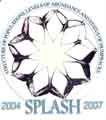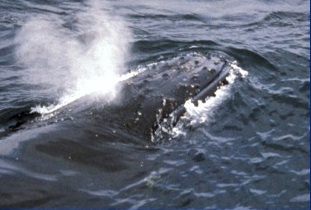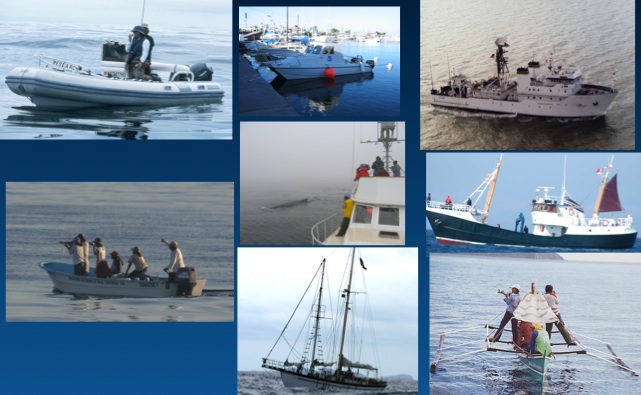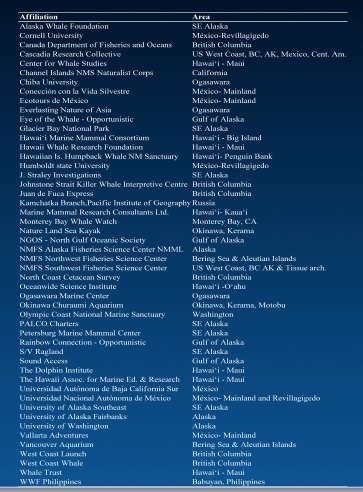
Home Methods 1 | Photo Identification | Mark and Recapture Biopsy | Summer Feeding Areas, Wintering Grounds and Migration | Human Impact | Population Estimates
Activity 1: Questions about SPLASH | Activity 2: Interpreting Graphs | Activity 3: Mark and Recapture | Activity 4: Estimating Humpback Population Growth | Activity 5: Whale Tails: Photo ID | Activity Answers
SPLASH is considered to be the largest research effort of its kind and included the collaborative effort of 50 research groups and more than 400 researchers from 10 countries.
One of the major successes of SPLASH was the ability of so many scientists to work together for the common goal of learning more about the North Pacific humpback population. As the table shows (right), there were different groups responsible for specific areas of the North Pacific. However, the research effort was much more complicated than it appears. For instance, in Hawaii there were eight different teams coordinating their efforts at six different areas. In Mexico, the wintering humpbacks were found in three different areas and each wintering area had its own research team.

As the photos show below there were a number of different platforms (boats) used during this study.


Along the mainland of Mexico, commercial whale watching boats contributed photos. Off the coast of Mexico, at the Revillagigedos Islands, researchers used inflatable boats. The offshore surveys were primarily done by NOAA using their larger research ships (upper right). When humpbacks were sighted, the inflatable boats were lowered and researchers were able photo ID and obtain biopsy samples from whales in the area.
The map below shows the cruise tracks of various teams of researchers in the Eastern North Pacific including Russia, Aleutian Islands, South east Alaska, British Columbia, Washington, Oregon and California. The color-coded cruise tracks indicate the organization who did the survey.

Graphic from Final Report for Contact AB133F-03-RP0078
